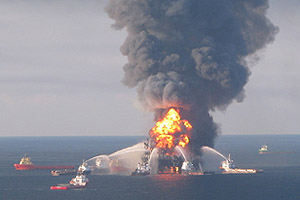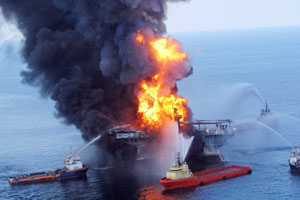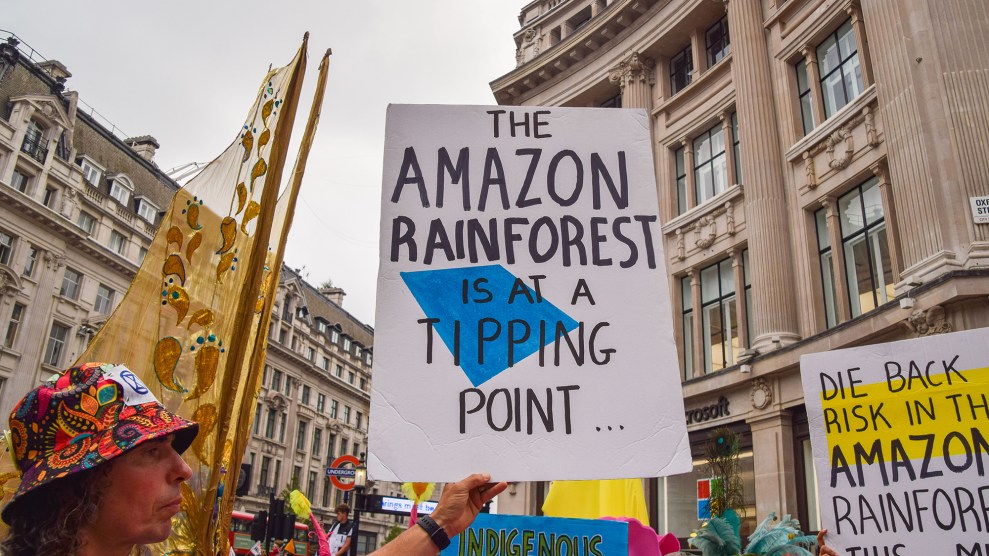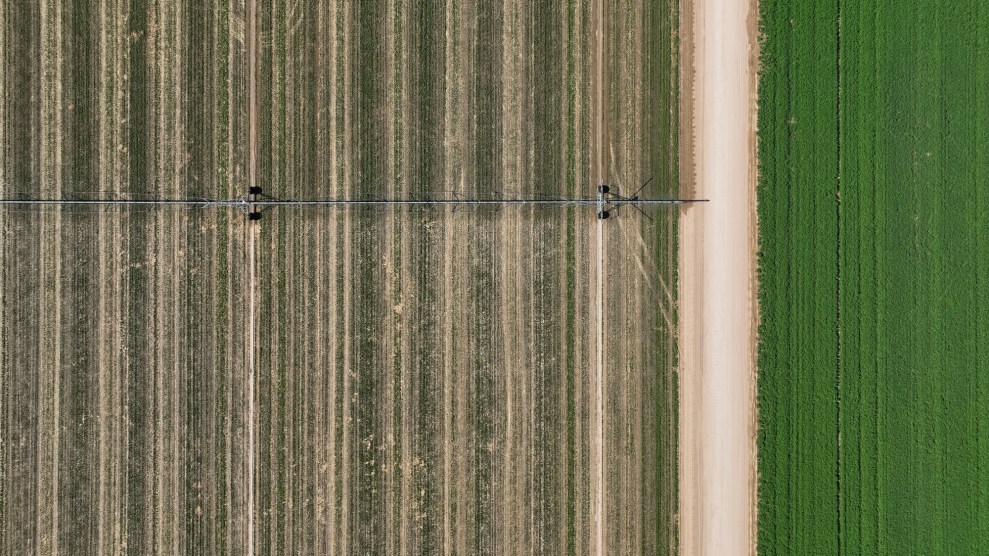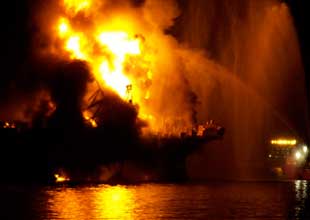
BP released the findings of its internal probe of the Deepwater Horizon disaster on Wednesday. The 193-page report accepts some of the blame for the explosion and subsequent spill, but also points the finger at its partners in the operation. In the eight key findings in the report, the company only directly takes responsibility for one of the problems that led to the disaster.
While investigation into what happened on the rig on April 20 is far from complete, the company’s initial report attempts to shift some of the blame to the other companies involved in the disaster: Transocean (the owner of the Deepwater Horizon), Halliburton (the company charged with cementing the well) and Cameron (the manufacturer of the failed blowout preventer). BP has so far received the bulk of the criticism for the disaster, with its partners claiming that it was cutting corners to save time and money.
BP’s report concludes that “no single factor caused the Macondo well tragedy,” but “a sequence of failures involving a number of different parties led to the explosion and fire which killed 11 people and caused widespread pollution in the Gulf of Mexico earlier this year.”
From the executive summary:
The accident on April 20, 2010, involved a well integrity failure, followed by a loss of hydrostatic control of the well. This was followed by a failure to control the flow from the well with the BOP equipment, which allowed the release and subsequent ignition of hydrocarbons. Ultimately, the BOP emergency functions failed to seal the well after the initial explosions.
The report concludes that both a cement barrier and something called a “shoe track” barrier failed to contain the flow of oil and gas from the well. The team “concluded that there were weaknesses in cement design and testing, quality assurance and risk assessment.” This perhaps could have been avoided, the report concludes, by “more thorough review and testing by Halliburton” and “stronger quality assurance.”
Prior to closing off the well, tests that indicated that there were problems with the well’s integrity were misread; as a result, “the Transocean rig crew and BP well site leaders reached the incorrect view that the test was successful and that well integrity had been established.” This in turn caused oil and gas to flow into the riser and past the blowout preventer, but the crew working on the rig did not notice the influx soon enough and were unable to regain control of the well.
The rig’s system designed to prevent the gas and oil from catching fire failed, too, as did the blowout preventer. The report notes that investigators found “indications of potential weaknesses in the testing regime and maintenance management system” for the blowout preventer (BOP). It’s worth noting, however, that the BOP was only removed from the site recently and has not been fully examined yet.
Of course, this is only BP’s self-evaluation of what went wrong. The Coast Guard and the Bureau of Ocean Energy Management, Regulation and Enforcement are still in the process of their own joint investigation into the spill. The Oil Spill Commission that President Obama formed is also conducting an investigation, as is the Justice Department and Congress.
The results of the federal and independent probes probably won’t be released for some time. In the meantime, this is clearly BP’s attempt to preemptively deflect blame and raise concerns about their partners’ role in the disaster. “I look forward to seeing the final results of the multiple other investigations not funded by BP or the other companies involved in this disaster,” said Rep. Ed Markey (D-Mass.) in a statement. “Those are the reports that will tell the real story of this disaster, and give us the lessons we need to create laws that will prevent this type of accident from happening again.”
The other companies fingered in BP’s report dispute its conclusions. Transocean maintains that the disaster was result of “BP’s fatally flawed well design” and accused the company of making “a series of cost-saving decisions that increased risk—in some cases, severely.” Transocean is also conducting its own investigation.
Nor are environmental groups pleased with the oil giant’s attempts to downplay their role in the disaster. “BP’s efforts to spread the blame for the Deepwater Horizon oil disaster displays a devastating litany of human error, incompetence and technical failure, but of course this tragedy is still unfolding in the Gulf of Mexico,” said Dan Howells, deputy campaigns director at Greenpeace. “While BP continues to try and blame others, polish its image, and downplay the devastation it has caused, we cannot forget that the full scope of this disaster is only just beginning to be understood.”
